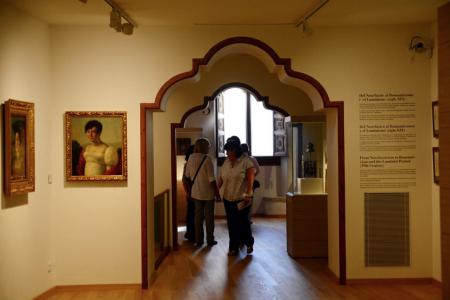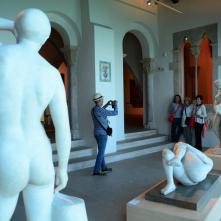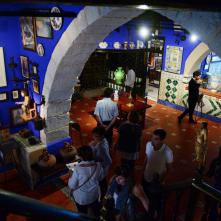Museums of Europe
The nomination of Cau Ferrat and Maricel Museums for the the European Museum of the Year award has brought no little satisfaction. First, the nomination itself. It is not easy to stand out in the vast museum scenary existing in the European continent. For the organization, It is not easy to accommodate all European countries, which represents much more than the European Union. European Museums Year Award (EMYA) was founded in 1977 under the patronage of the Council of Europe, an institution encompassing the real Europe, from Baltic countries and Finland to Azerbaijan, from Lisbon to Vladivostok with the fully fulfilled will to consider on equal terms all kinds of museums, large and small, public and private. The annual meeting of museums nominated for the European Museum of the Year Award, in conjunction with the celebration of professional forums on current issues and future trends, shows the extent to which the concept of museum is realistic, comprehensive and generous.
This year, we have been chosen among 49 museums from 24 countries-the European Council is composed by 47-. Nominations are submitted directly and without intermediaries; nominations are assessed by a committee of professionals that are renewed periodically. For the first time, all candidates were considered given the importance of all of them and the fulfillment of main performance indicators that determine excellence: refurbished museums, technology integration, renovation of museum concepts; coordination of different disciplines; involvement and social and educational capacity. The wide variety of themes were a challenge not only for evaluations, but also shows the reality of European museums. It is a reality that fulfills the definition of the International Council of Museums (ICOM), as it considers museums as an institution at the service of society that conserves, communicates and exhibits assets related to human beings and nature for knowledge creation, education and culture.
In the context of EMYA 2016, art museums have been outnumbered. The wide range of themes -from wine to football (the two museums of Portugal were from two football teams: Porto and Benfica), from microbial life to Celtic civilization, including memorial monuments dedicated to water, post, dogs or fairy tales. Among applied common denominators were innovation to create knowledge, and the education and involvement of the museum and surroundings. We have barely mentioned, if anything, large container-buildings built by famous architects, and many projects related to heritage or science having in mind the education and creation of knowledge as a goal. Ethnographic museums, in very different forms and situations, are on the rise because the human need to preserve, interpret and explain is a permanent feature of people and nations whatever the circumstances.
Renovations have been especially important in museums of Balkan countries, particularly in the cities of Mostar (the bridge) and Vukovar (appearing in the film Harrison's Flowers), devastated by a war for two decades. The memory becomes a reality in the Gallery 11/07/1995 in Sarajevo, monograph about the Srebrenica massacre and at the Jewish Museum in Warsaw, which was awarded the European Museum of the Year.
Museums of Europe represent the diversity of humanism in terms of social and educational community and the country. EMYA emanates from a value system which, beyond the economic implication of culture and derivatives, opts for essential and unavoidable intangibles for personal development, education, knowledge, culture and heritage . For the Museums of Sitges, sharing this value system and being an active participant in the edition of 2016 has been a unique and extraordinary opportunity. It involved the entry in a professional and vocational community that works for society, legacy and excellence, and last, but not least, the positioning of the Museums of Sitges on the map of Europe, in this case, more than just a map.
Vinyet Panyella i Balcells


 Buy tickets
Buy tickets Buy tickets
Buy tickets





